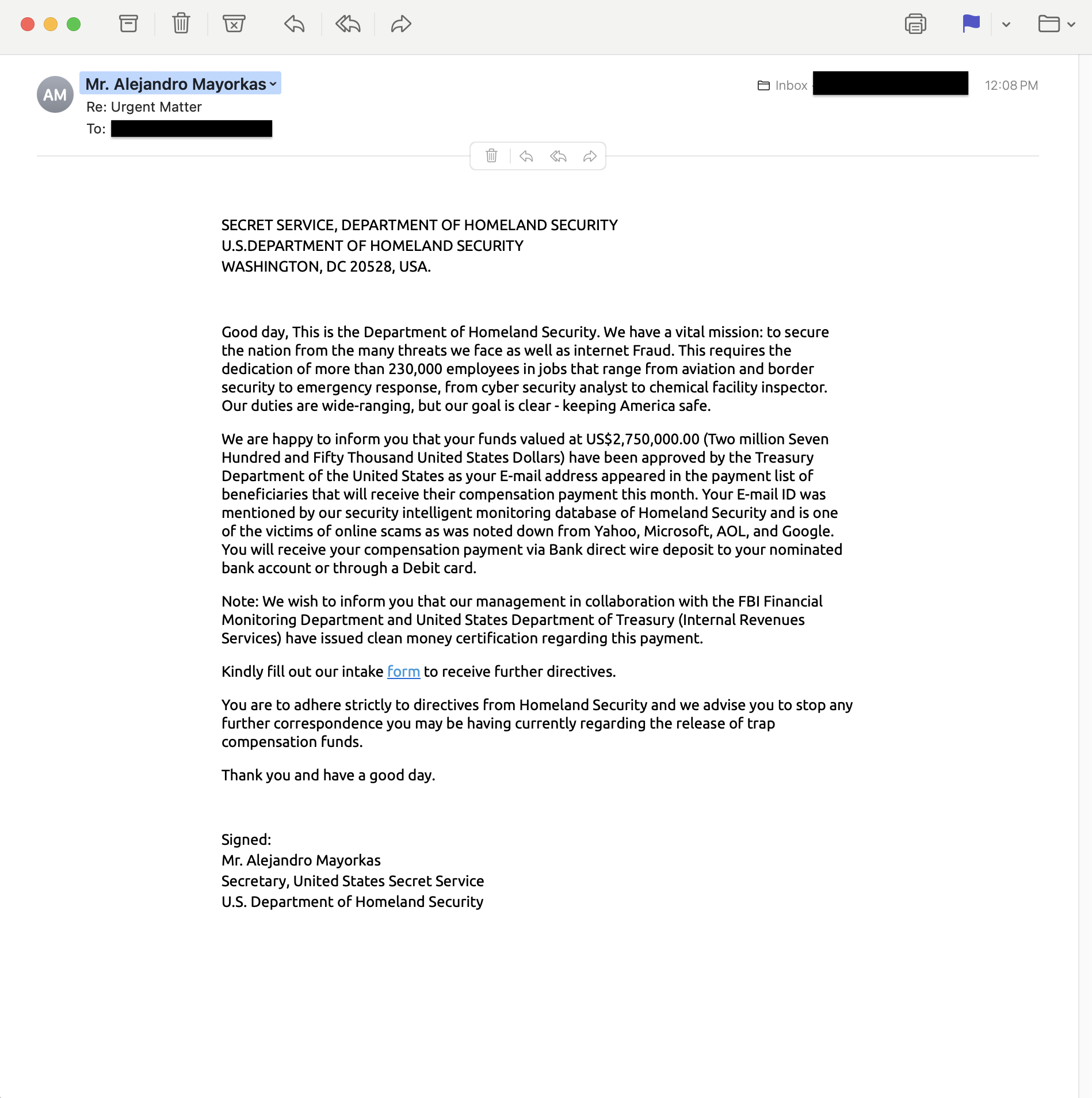The Government Doesn't Want to Give You Money
This is a near copy of an actual phishing email that we recently received at Phool Phisher.
An email from Homeland Security? That sounds important. I shouldn't ignore that. It's directly from Alejandro Mayorkas? I've heard that name in the news. He's someone official. This can't be fake. I should definitely not ignore this, right?
Unfortunately, it really is too good to be true. The government does not want to give you money.
It's a phishing scam.

.png)
But wait, if someone wants to give you money, how could it be a phishing scam?
Unfortunately, this is how many scams begin. Whenever someone you don't know offers you something that seems too good to be true, you have to be extra vigilant. They're hoping that your emotions will kick in and you will let your guard down.
If they succeed in enticing you to respond and engage, they will either trick you into revealing your sensitive account information (to transfer the money) or ask you to pay some sort of fee or tax (to get the process started). Either way, they'll have your money, and you definitely won't be getting your promised prize!
.png)
Phool School Rules:

1. Suspicious Email Address
Notice how the email is not sent from an official government domain (everything after the @ in the email address). Any email that comes from a suspicious address is most likely a scam.

2. Suscpicious Link
Notice that the domain for the link ("sendibt3.com") does not match the appropriate government domain ("dhs.gov")? Even though a legitimate link may have a lot of garbled characters, most will still list the sender's domain name.
Sometimes (as in this case) the email service is using an alias and will eventually forward you -- somewhere. It may be set up to take you where you expect to go, or it may be set up to take you to a fake site. There's no way to tell.
Whenever a link seems suspicious, you're much better off searching for the site online rather than clicking on the link. Links are easy -- unfortunately, that makes them easy for thieves to manipulate.
Follow the Phool School Rules and look out for these simple "tells" to help protect yourself against many of the most common phishing scams.
Test your knowledge with this Phishing Quiz from Google.
